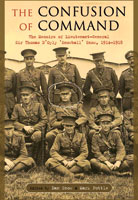Spying for Hitler (Hardback)
Nazis Who Infiltrated America

Pages: 232
Illustrations: 16 mono illustrations
ISBN: 9781036112196
Published: 8th November 2024
(click here for international delivery rates)
Order within the next 8 hours, 6 minutes to get your order processed the next working day!
Need a currency converter? Check XE.com for live rates
| Other formats available - Buy the Hardback and get the eBook for £1.99! | Price |
|---|---|
| Spying for Hitler ePub (3.2 MB) Add to Basket | £6.99 |
When Hitler was striving for recognition and relevance in the political turmoil of the early Weimar years in Germany he gave little thought to the world on the other side of the Atlantic other than to nurture a constant nagging resentment over President Wilson’s role in the post-war evisceration of Germany at Versailles in 1919. It was the United States, however, that had bankrolled the German economy to substantially boost industrial production and employment in the 1920s and the evidence of American wealth and economic power was hard to ignore.
Even when the Nazis took over in Germany after the elections of March 1933, Hitler’s narrow vision was still concentrated on consolidating his power base in Germany itself and quickly thereafter expanded to take in the countries of Eastern Europe. What impressions he had of American culture and society were encapsulated in the trivialities and stereotypes of Hollywood movies depicting the ‘wild west’ or the deprivations of the Great Depression.
Despite its economic power, nothing in Hitler’s world view envisaged the United States as a potential player in European politics, but the Germans intelligence services that he inherited were not so easily convinced. They had been aware of American power and influence since before the First World War and for them, spying on the United States was nothing more than a continuation of their efforts to prevent that country thwarting German ambitions.
There had been spectacular successes in the past, such as the espionage attack that had wreaked massive destruction in the Black Tom Island explosion on 30 July 1916. But overall, the German agencies had gone to great lengths and considerable expense without achieving their ambitions and failed to prevent American participation in the war. With another war in prospect, the Germans once again made plans to influence American policy and do what they could to keep their forces out of European affairs.
Spying for Hitler traces the history of German espionage in the United States and describes, in detail, the personnel involved and operations they conducted all through the 1930s and early 1940s. It examines the training of German agents and the espionage techniques they employed.
The way in which the FBI reacted to the threat, in particular, from the Griebl-Lonkowski spy ring, shows how Hoover’s ‘Feds’ were initially slow to appreciate the danger, but soon learned the lessons. This was later to put them on a sounder footing to counter further attempts to infiltrate agents into the United States. This was most spectacularly displayed in Operation Pastorius, when saboteurs were landed on the American East Coast from U-boats.
This book also examines the way in which the Germans used ‘sleeper’ agents and also describes how the FBI successfully ‘turned’ German agents to feed disinformation to Abwehr headquarters in Berlin. It describes how espionage missions played out and the fate of those involves.
“…the book starts with WWI spying and sabotage in the US by German agents. After that comes the great 1930s spy rings and the 1940s spy and sabotage efforts. Enjoyed it!"
Historical Miniatures Gaming Society
Read the full review here
About Norman Ridley
NORMAN RIDLEY is an Open University Honours Graduate who writes about the less well covered aspects of 20th Century history. He lives in the Channel Islands.
Hitler's U.S. Allies Americans Who Supported the Nazis (Hardback)
In many countries around the world, the end of the First World War, far from leading to a new world order of stability, ushered in an era of uncertainty and economic decline. To solve the problems of unemployment, high inflation, low wages and poor working conditions, many turned to the political right for a solution – to leaders such as Mussolini and Hitler. But it was not only in countries such as Italy and Germany that people saw fascism as an alternative to democracy. It is sometimes said fascism in America first manifested itself as a reaction by a native-born population to the surge in…
By Norman RidleyClick here to buy both titles for £45.00






















